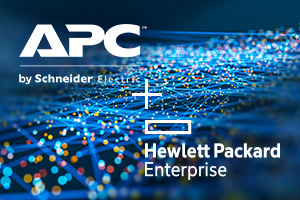In today’s climate, a disaster recovery plan is crucial
As companies these days go about the business of data center transformation, they often do so with a particular focus on minimizing IT disruption....
2 min read
![]() Zones
:
Aug 17, 2020 5:00:00 AM
Zones
:
Aug 17, 2020 5:00:00 AM

Nowadays, IT leadership at most companies understand that an important aspect of data center transformation is setting your company up for disaster recovery (DR). If anything, ever goes wrong, and your access to your essential data is interrupted, you need to have a way of getting your files back and maintaining business continuity.
And it’s not enough to merely duplicate your data, stash it on a backup server, and call it a day. To implement a DR strategy that’s cost-effective and will really work, you need a process that’s a little more sophisticated.
Traditional DR misses the mark in several ways. First and foremost, companies have historically set up processes that are too complex, as they tend to use many different servers and applications in disparate locations. They’re also often too slow, too unreliable, and inefficient. One key problem here is the prevalence of “dark data” – files that you’re storing and maintaining even though they add no value to your business. If you’re wasting too much time and money backing up data with no value, then it’s clear you need a better DR strategy.
There are also some hidden costs you need to be aware of. For example, there are server maintenance costs, as the typical DR server always needs to be running. There’s the extra manpower involved, as most companies have IT staff members constantly deployed at both their main servers and their backup sites, meaning they pay double the wages. And there’s also the significant cost of addressing any downtime issues that arise.
So, what’s the solution? Perhaps, instead of trying to run a full-capacity redundant DR system in a secondary site, it’s time you considered the benefits of cloud DR. Moving DR to the cloud is a great way to make the process more efficient while eliminating a number of those hidden costs. And it’s often not that difficult to do – you simply move your existing apps and data with the least amount of refactoring work or process change possible.
Of course, it’s not as simple as just “pick a cloud, any cloud.” You’ve got to be strategic about the environment you choose for your data, and you’ve got to choose a cloud platform that’s a good fit for your organization and its needs. There are many factors to consider here, such as whether a cloud system is capable of ingesting data from vSphere environments or can leverage software-defined data centers (SDDCs). If you don’t fully understand these nuances, that’s fine, as working with the right business partner can absolutely help.
At Zones, we work every day to help clients draw up DR blueprints that will meet their needs. We have a proven track record of designing and implementing reliable solutions that increase recovery speed and cut costs. We also have strong partnerships with many tech OEMs, which means we can always find the hardware and software you need.
Want more information on how Zones can improve your DR posture? We’re here for you. Check out our new guide, entitled “Move Your Disaster Recovery Out of the Dark Ages,” and you’ll learn everything you need to know.


As companies these days go about the business of data center transformation, they often do so with a particular focus on minimizing IT disruption....

All around the world, companies are in the midst of a digital transformation. They’ve discovered that by tapping into new technologies – such as...

It should come as no surprise to anyone that many companies are making data center transformation a priority in 2020. The incentive is clear – with...